#deutsche revolution
Explore tagged Tumblr posts
Text
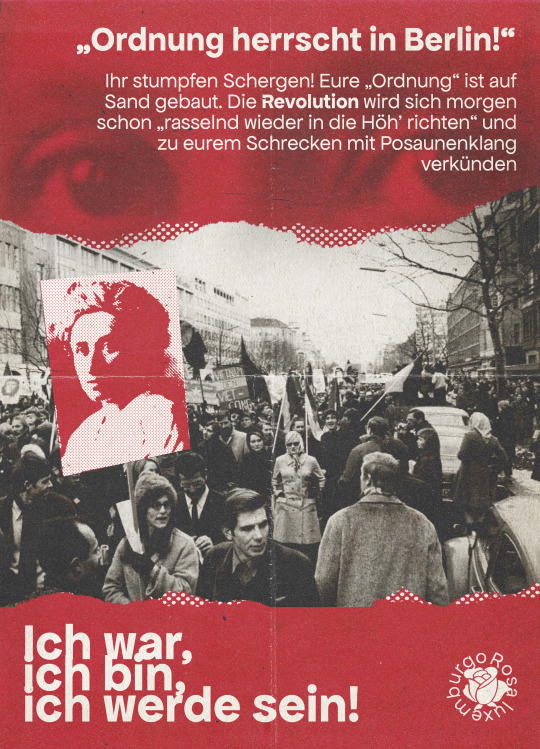

"¡El orden reina en Berlín!", ¡esbirros estúpidos! Vuestro orden está edificado sobre arena. La revolución, mañana ya "se elevará de nuevo con estruendo hacia lo alto" y proclamará, para terror vuestro, entre sonido de trompetas:
¡Fui, soy y seré!
Rosa Luxemburgo, 14 de enero de 1919.
#rosa luxemburgo#deutschland#alemania#comunismo#socialismo#marxismo#communism#socialism#marxism#kommunismus#sozialismus#marxismus#revolución alemana#deutsche revolution#1919
8 notes
·
View notes
Text
Anfrage
Die Geschäftsordnung des Rates #Lingen gibt die Möglichkeit, dem OB und seiner Verwaltung Fragen zu stellen. Das habe ich am Dienstag in der Ratssitzung getan. Meine Anfrage betraf die #Deutsche_Revolution, die vor genau 175 Jahren scheiterte. Lest mal:
Die Geschäftsordnung des Lingener Stadtrates gibt Ratsmitgliedern die Möglichkeit, den OB und seine Verwaltung zu befragen. Das Recht habe ich in der Ratssitzung am Dienstag in Anspruch genommen. Meine Anfrage an den OB: Der 18. März war der Tag, an dem vor genau 175 Jahren der demokratische Aufstand in Berlin zusammengeschossen wurde. Vor 175 Jahren begann die erste deutsche Reviolution.…

View On WordPress
#1848#1918#Andreas Eiynck#Anfrage#Arbeiter- und Soldatenrat#Demokratie#Demokratiebewegung#Deutsche Revolution#Die BürgerNahen#Frank-Walter Steinmeier#Geschäftsordnung des Rates#Heribert Prantl#Johannes zum Sande#Lingen (Ems)#Mirko Crabus#Paulskirchenversammlung#Revolution
1 note
·
View note
Text

The Ironworks of Borsig in Berlin (1847) by Karl Eduard Biermann. Märkisches Museum.
#karl eduard biermann#märkisches museum#berlin#19th century art#industrial design#germany#german art#1840s#1847#circa 1840#painting#kunst#europe#art history#kunstwerk#urban landscape#artwork#oil painting#german artist#german painter#deutsche geschichte#architektur#architecture#19th century architecture#northern europe#industrial#industrial revolution#19th century#museums#ironwork
41 notes
·
View notes
Text
Please pray for me. I have my last German final in about an hour and I do NOT feel prepared.
#theoretically my brain knows what the march revolutions of 1848 were#and theoretically this is the same brain that read immanuel kant's essay on die Aufklaerung#but what do i remember? gar nichts!#the blog log#college life#deutsche Sachen und deutsche Sprachen
20 notes
·
View notes
Text
Für Pierre und Eugene, zwei Novizen an Bord der Baroque, geht ein Taum in Erfüllung. Der neue Pontifé Alban wählt ausgerechnet sie als seine neuen Estelles aus, die ihn im Dienste der Sonne auf das Gestein begleiten dürfen. Doch aus der Freude über die neue Aufgabe wachsen bald Zweifel, als Alban sie auf die Jagd nach dem abtrünnigen Mönch Georges in die Wildnis schickt. Während Eugene in seinem Glauben an das System festhält, droht Pierre, sich von den schönen Worten Georges' gefangen nehmen zu lassen - und damit die Baroque zu verraten.
#abenteuer#bücher#intrige#mönche#rache#revolution#verrat#weltall#deutsch#lesen#ebook#schreiben#wattpad#amwriting#amschreiben#ichschreibe#ichlese
3 notes
·
View notes
Video
youtube
Herbert Grönemeyer - Deine Hand (Offizielles Musikvideo)
#youtube#music#art#mv#german#deutsch#herbert grönemeyer#deine hand#iran revolution#before you accuse him for making money out of it#he talked days before about his opinion#and he supports iran revolution
1 note
·
View note
Text

KÖHLER:
Warum haben so wenige Schriftsteller der nachfolgenden Generationen sich an das Thema gemacht?
Meine eigene Antwort: Weil ihre Väter den Eid geschworen hatten - und sich daran hielten… und sie selbst erkannten, dass ihre Fragen nicht nur nicht erwünscht waren - sie hatten keine Fragen zu stellen.
SEBALD:
Dieses Defizit reiht sich ein in eine lange Reihe von anderen Defiziten, nämlich in die Tatsache, daß überhaupt zu wenig nachgedacht worden ist über diese Zeit. Man kann sich ja aus der deutschen Nachkriegsliteratur kaum eine auch nur halbwegs zureichende Vorstellung machen von dem Ausmaß der Verheerung und noch weniger über das mit diesen Verheerungen verbundene Grauen.
Ich glaube, Sebald denkt beim Benennen des Grauens an Primo Levi. Und an die verhungerten Säuglinge, Mütter und Kleinkinder auf dem Land.
Bemerkenswert ist seine Wortwahl „Verheerungen“ denn es war das glorifizierte Heer, nach dem bis heute die Straße in Charlottenburg benannt ist, das die schlimmsten Verbrechen am eigenen Volk beging. Darf man dieses Wort in diesen Zeiten eigentlich wieder verwenden? (Ironie off)
Die Kehrseite davon war das so genannte deutsche Wirtschaftswunder.
Das Wort schmeckt nach mehrmaligem Gebrauch ähnlich fad wie „Reichskristallnacht“.
Enzensberger hat darauf verwiesen, daß man die rätselhafte Energie der Deutschen nicht begreife, wenn man sich gegen die Einsicht sträubt [sic!], daß sie ihren Defekt zur Tugend erhoben haben.
Die Bewußtlosigkeit [schreibt er,] war die Bedingung ihres Erfolgs.
Die Quelle der psychischen Energie aber ist das Geheimnis von den in die Grundfesten des deutschen Staates eingemauerten Leichen. Ein Geheimnis, das die Deutschen nach dem Krieg fester aneinander band und noch immer bindet als jede positive Zielsetzung, etwa die Verwirklichung der Demokratie, das jemals vermochte.
W.G. Sebald: „Auf ungeheuer dünnem Eis.“ Darin: Katastrophe mit Zuschauer. Gespräch mit Andrea Köhler (1997). S.163f.
#w.g. sebald#verdrängung#bewusstsein#unbewusstes#trauma#demokratie#friedliche revolution#deutsche einheit#deutsche eigenheit#therearestillwallsinberlin#transgenerationales trauma#psychologie#die unfähigkeit zu trauern#Hans Magnus Enzensberger#Primo Levi#Literaturwissenschaft#shoah#holocaust#fatalism
0 notes
Text
Die Paulskirche
Mit Revolutionen tut sich der Deutsche schwer. Nur ungern engagiert er sich für etwas Radikales, es liegt ihm nicht. In dieser Kirche, der Paulskirche in Frankfurt begann die erste deutsche Revolution 1848. Sie nahm kein gutes Ende für die Revolutionäre. Die zweite Revolution begann Anfang 1933. Sie nahm kein gutes Ende für alle.

View On WordPress
0 notes
Text

Wiedergefunden
#shulamith Firestone#frauenbefreiung und sexuelle Revolution#dialectics of sex#Feminismus#sexismus#Linke Theorie#kommunismus#sozialismus#Matriarchat#Patriarchat#german stuff#radfem#terfblr#terfsafe#auf deutsch#deutsches tumblr#deutsches zeug#deutschland#german tag#german langblr#german things#germany
1 note
·
View note
Text
0 notes
Photo
Kleiner Vorgeschmack auf meinen Geburtstag versehen mit der Bemerkung, dass es so etwas nur in abgeschwächter und gescheiterter Form in Deutschland gab. Ein kollektives Phänomen, dass bis heute nachwirkt und auch heute noch die Politik bestimmt.
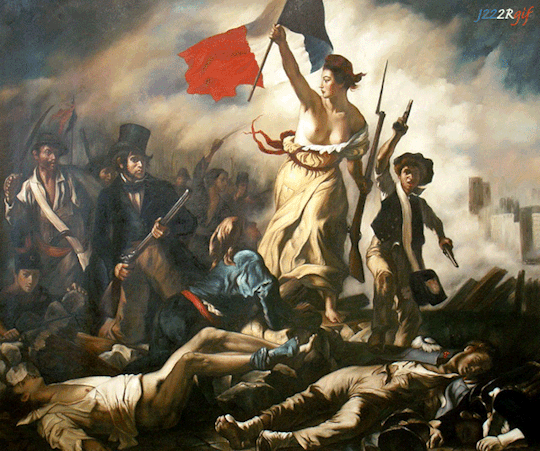
Le jour où la France coupa la tête de son roi, elle commit un suicide.
- Ernest Renan (1823-1892)
The painting has served as inspiration for much, from banknotes to a cover of a Coldplay album but is most commonly associated as the definitive painting to depict the storming of the Bastille on 14 July 1789 to light the fuse for the start of the French Revolution of 1789. Liberty Leading the People was painted in 1830 by Eugene Delacroix right after the revolutionary effervescence that had swept across Paris that same year.
Characterised by its allegorical and political significance, this large oil on canvas has become a universal symbol of liberty and democracy. Often used in popular culture to symbolise people’s emancipation from oppressive domination, it is one of the most famous paintings in Art History.
However this is wrong.
Liberty Leading the People is a painting usually associated with the July Revolution of 1830 in France. It is a large canvas showing a busty woman in the centre raising a flag and holding a bayonet. She is barefoot, and walks over the bodies of the defeated, guiding a crowd around her.
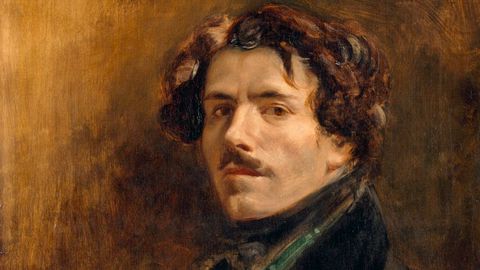
Eugène Delacroix was a master of colour and it is in Liberty Leading the People that he clearly expressed this. Carefully, Delacroix built a pulsating and dynamic scenario about an extremely current theme in his times. As he participated little in the fighting, he wrote: “If I can not fight for my country, I paint for it.”
The painting is about freedom and revolution. First, because that is exactly what it portrays. In July 1830, France rose up against King Charles X, who was extremely unpopular for, among other things, being very conservative in political terms and trying to restore an old regime that French people no longer wanted. In the artistic sense, the painting also represented a revolution – and more than that: freedom. In the time of Delacroix, painters generally obeyed the rules of the Academy of Fine Arts which stressed the mastery of drawing, disegno. Delacroix, however, put more emphasis on the use of colour in an unobstructed way.
A year after its production, the painting was bought by the French Government and but was not on display for a long time. Currently, the artwork is part of the Louvre collection.

If Jacques-Louis David is the most perfect example of French Neoclassicism, and his most accomplished pupil Jean-Auguste-Dominique Ingres, represents a transitional figure between Neoclassicism and Romanticism, then Eugène Delacroix stands (with, perhaps, Theodore Gericault) as the most representative painter of French romanticism.
French artists in early nineteenth century could be broadly placed into one of two different camps. The Neoclassically trained Ingres led the first group, a collection of artists called the Poussinists (named after the French baroque painter Nicolas Poussin). These artists relied on drawing and line for their compositions. The second group, the Rubenists (named in honour of the Flemish master Peter Paul Rubens), instead elevated color over line. By the time Delacroix was in his mid-20s - that is, by 1823 - he was one of the leaders of the ascending French romantic movement.
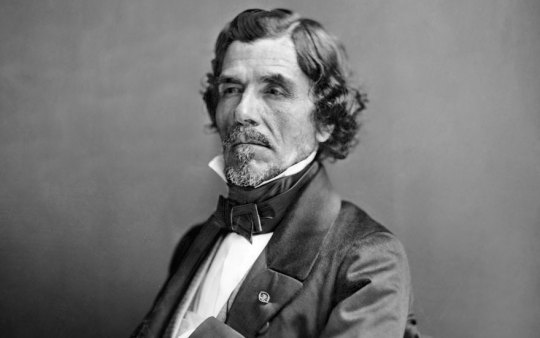
From an early age, Delacroix had received an exceptional education. He attended the Lycée Imperial in Paris, an institution noted for instruction in the Classics. While a student there, Delacroix was recognised for excellence in both drawing and Classics. In 1815 - at the age of only 17 - he began his formal art education in the studio of Pierre Guérin, a former winner of the prestigious Prix de Rome (Rome Prize) whose Parisian studio was considered a particular hotbed for romantic aesthetics. In fact, Theodore Gericault, who would soon become a romantic superstar with his Raft of the Medusa (1818-19), was still in Guérin’s studio when Delacroix arrived in 1815. The young artist’s innate skill and his teacher’s able instruction were an excellent match and prepared Delacroix for his formal admission to the Ecole des Beaux-Arts (the School of Fine Arts) in 1816.
To become leading figure of the French romantic school, Delacroix wished to emancipate himself from academic art’s classical ideal and canons. The subject of the painting was a contemporary one, whereas canvases of this size were generally reserved for historical paintings, at least according to the rules of the hierarchy of genres of the Academy. Delacroix stated that he has “undertaken a modern subject, a barricade, and although I may not have fought for my country, at least I shall have painted for her. It has restored my good spirits.” The painter also uses reds and blues, which result in stark contrasts, instead of the more muted colours that were used at that time.
Delacroix wasn’t much of a revolutionary himself and did not take part in the Paris fighting, but rather defined himself as a “simple stroller.” As he wrote in a letter to his brother; ���A simple stroller like myself ran the same risk of stopping a bullet as the impromptu heroes who advanced on the enemy with pieces of iron fixed to broom handles.” However, he advocated for liberalism and was struck by a feeling of patriotism and pride as he observed his fellow citizens fighting.

The revolution depicted in this painting is not to be confused with the 1789 French Revolution. Delacroix was inspired by the events of the July Revolution (known as Les Trois Glorieuses” (Three Glorious Days), a political upheaval that took place between 27th and 29th July 1830. These violent demonstrations took place as the ruling French King Charles X tried to restrain the freedom of the people by executing a constitutional takeover. Parisians violently protested against the abuses of their individual rights. Rioters took hold of the city and violent fighting ensued, resulting in a high death toll. Charles X eventually abdicated and a constitutional monarchy, the July Monarchy, was established with Louis-Philippe I being made King of the French.
This uprising of 1830 was the historical prelude to the June Rebellion of 1832, an event featured in Victor Hugo’s famous novel, Les Misérables (1862), and the musical (1980) and films that followed. Anyone familiar with Claude-Michel Schönberg and Alain Boublil’s musical can look at Delacroix’s Liberty Leading the People and hear the lyrics of the song that serves as a call to revolution:
Do you hear the people sing? Singing a song of angry men? It is the music of a people. Who will not be slaves again.

Marianne, the Allegorical Muse
At the centre of the painting, the allegorical depiction of Liberty draws the eye immediately. Represented as Marianne, a symbol of the Republic, the woman coiffed with a Phrygian cap (a nod to the sans-culottes of the French revolution) is leading a group of revolutionaries. Her draped yellow dress reveals her breast and recalls the Greek goddesses of Antiquity. Her profile, a straight nose, plump lips, and a delicate chin are reminiscent of Antique Greek and Roman statues. She is a tribute to Ancient Greece, the cradle of democracy, as well as to the Roman republican tradition. However, Delacroix mixes in modern symbols as she holds the tricolour flag in one hand, and a bayonet in the other. This way, Liberty embodies both the modern struggle and Antiquity’s ideology of freedom.
The painting’s pyramidal structure heightens the fighting’s momentum. The ground is strewn with bodies and, out of the misery and pain, Liberty stands tall on the remains of a barricade, emerging strong and victorious. This rigorous composition contains and balances the painter’s impetuous brushstrokes and creates a striking lighting effect. It is a scene of chaos and energy, filled with smoke and movement, and yet Delacroix’s pyramid successfully creates a sense of order. The painting recalls Gericault’s Raft of the Medusa, that represents violence without idealising it.
The title makes it obvious, the woman represented here is the ideal of freedom. But even as an allegorical figure, the woman is more than that: her name is Marianne, which is probably the result of joining together two very common names in France at the time, Marie and Anne.
Curiously, 18 years after the July Revolution, Marie Anne Hubertine, a French activist who fought for the insertion of women in politics, was born. This is because, although the representation of freedom was feminine, women still couldn’t vote or stand for public office - although the female figure was always chosen to represent most of the allegories.
Keep reading
123 notes
·
View notes
Text
DDR stands for deutsche deutsche revolution
305 notes
·
View notes
Text
Das deutsche Pendant zu Les Miserables ist ein achtstündiges Stück über die Revolution von 1848. Es hat mehr Charaktere als Krieg und Frieden and after three hours it just devolves into incomprehensible leftist infighting. Am Ende boykottieren sich alle Fraktionen gegenseitig und gehen nach Hause.
233 notes
·
View notes
Text
Der 09. November - Der Tag der Deutschen
Kaum ein anderer Tag vereint so viele, für unser Land historisch bedeutsame Ereignisse wie dieser
09.11.1848 - standrechtliche Hinrichtung von Robert Blum
Der republikanische Abgeordnete der Frankfurter Nationalversammlung wird, obgleich er unter parlamentarischer Immunität steht, bei Wien erschossen. Seine Hinrichtung gilt als Symbol für die Niederschlagung der Deutsche Revolution 1848/1849 durch die reaktionären herrschenden Kreise.
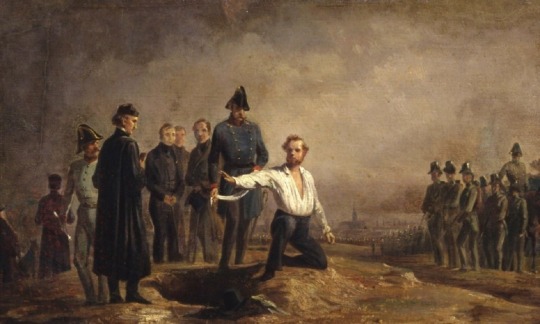
09.11.1918 - die Proklamation der Republik in Berlin
Während der Novemberrevolution 1918 ruft von einem Fenster des Reichstagsgebäudes aus der sozialdemokratische Abgeordnete Philipp Scheidemann die “deutsche Republik” aus. Drei Stunden später proklamiert der Sozialist Karl Liebknecht vor dem Berliner Stadtschloss die “Freie Sozialistische Republik Deutschland”.
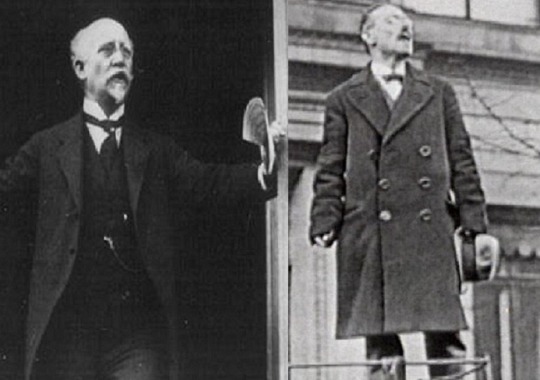
09.11.1923 - Hitler-Ludendorff-Putsch in München
In München putscht ein bis dahin unbekannter rechtsradikaler Demagoge namens Adolf Hitler im Verein mit dem reaktionären General Erich Ludendorff gegen die Weimarer Republik. Sein Versuch, die rechtsstaatliche Ordnung analog zu Benito Mussolini in Italien durch einen “Marsch auf Berlin” zu beseitigen, scheitert vor der Feldherrenhalle am Odeonsplatz durch den bewaffneten Einsatz der bayrischen Landespolizei. Vier Polizisten, ein unbeteiligter Passant und fünfzehn Putschisten sterben. Erstmalig werden die Nationalsozialisten einer breiteren Öffentlichkeit bekannt.
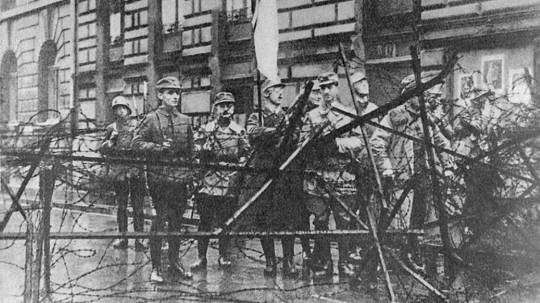
09.11.1938 - Reichspogromnacht
Die Novemberpogrome mit etwa 400 Todesopfern, 1.406 zerstörten Synagogen und jüdischen Gebetsstuben markieren den endgültigen Übergang von der gesellschaftlichen Diskriminierung der jüdischen Bürger im nationalsozialistischen Deutschland zur offenen Gewaltanwendung, die schließlich im Holocaust endete.
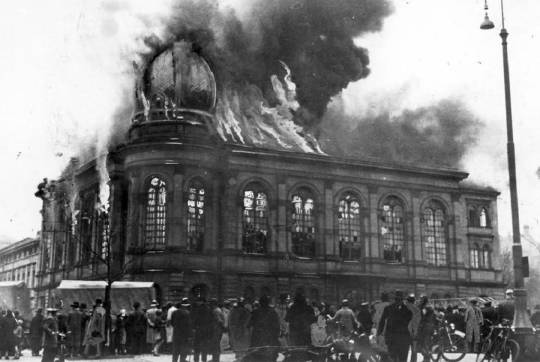
09.11.1989 Der Fall der Berliner Mauer
Auf einer bis dahin eher langweilig verlaufenen Pressekonferenz verliest das SED-Politbüromitglied Günter Schabowski gegen 7 Uhr abends auf Nachfrage des italienischen Journalisten Riccardo Ehrmann einen neuen Entwurf über Reisemöglichkeiten für DDR-Bürger.
Der etwas umständliche Wortlaut ist folgender: “Privatreisen nach dem Ausland können ohne Vorliegen von Voraussetzungen (Reiseanlässe und Verwandtschaftsverhältnisse) beantragt werden. Die Genehmigungen werden kurzfristig erteilt. Die zuständigen Abteilungen Pass- und Meldewesen der der Volkspolizeikreisämter in der DDR sind angewiesen, Visa zur ständigen Ausreise unverzüglich zu erteilen, ohne dass dafür noch geltende Voraussetzungen für eine ständige Ausreise vorliegen müssen. Ständige Ausreisen können über alle Grenzübergangsstellen der DDR zur BRD erfolgen.”
Der Reporter der “Bild”-Zeitung Peter Brinkmann fragt nach, ab wann dies in Kraft trete. Schabowski, der über den genauen Inhalt der neuen Regelung, die eine Sperrfrist beinhaltet, nicht informiert ist, da er bei deren Beschlussfassung nicht anwesend war, antwortet daher: „Das tritt nach meiner Kenntnis – ist das sofort, unverzüglich.“
Während das Fernsehen der DDR in nüchternen Worten über den Fakt der neuen Reisemöglichkeiten informiert, ist für Hanns Joachim Friedrichs während seiner Moderation der “Tagesthemen” die historische Bedeutsamkeit sofort ersichtlich: “Die DDR hat mitgeteilt, dass ihre Grenzen ab sofort für jedermann geöffnet sind. Die Tore in der Mauer stehen weit offen.“
Im Laufe des Abends versammeln sich immer mehr Menschen vor den Berliner Grenzübergängen und verlangen friedlich aber lautstark das ihnen neu zustehende Recht.
Eine halbe Stunde vor Mitternacht befiehlt Oberstleutnant Harald Jäger, der zuständige Leiter der Grenzübergangsstelle Bornholmer Straße, von seinen Vorgesetzten mit einer Entscheidung allein gelassen und mit den Menschenmassen vor der Grenzübergangsstelle konfrontiert, eigenmächtig, sofort alle Kontrollen einzustellen und die Schlagbäume zu öffnen. Bis Mitternacht folgen alle weiteren Berliner Grenzübergangsstellen seinem Vorbild.
Kein einziger Schuss ist gefallen, niemand wurde verletzt. Tausende einander völlig fremde Menschen fallen sich weinend vor Glück in die Arme.
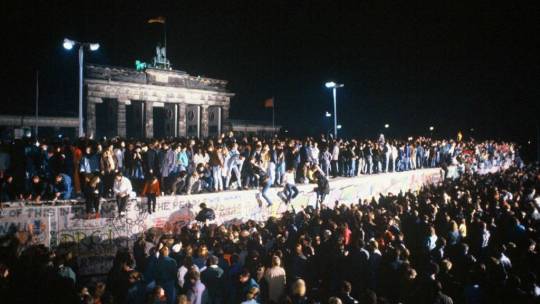
#deutschland#09.11.#deutsche geschichte#hinrichtung von robert blum#proklamation der republik#hitler-ludendorff-putsch#reichspogromnacht#mauerfall#germany#history
12 notes
·
View notes
Text
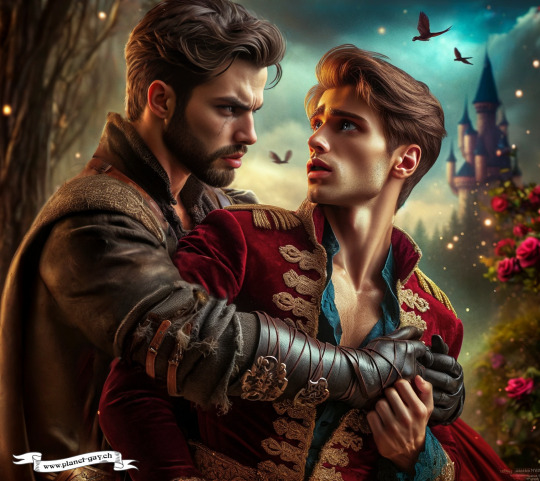
The Robber and the Prince
"A handsome young prince lost in the woods. Then robbers seized him, yet one of the robbers loved this prince. I love you my prince. I love you my robber. Dark and gold."
Original German text: "Ein schöner junger Prinz verirrte sich im Wald. Da packten ihn die Räuber, doch einer von den Räubern, liebte diesen Prinzen. Ich liebe dich mein Prinzen. Ich liebe dich mein Räuber. Dunkel und Gold"
These lines from the song "Der Räuber und der Prinz" by Deutsch Amerikanische Freundschaft (DAF) encapsulate more than just an unusual narrative. It is a poetic depiction of love and desire that challenges societal norms and expectations. Released in the early 80s, this song is emblematic of how DAF explored themes of sexuality, identity, and nonconformity in their music.
DAF, often regarded as pioneers of electronic music and the Neue Deutsche Welle, have left an indelible mark on music history. With their radical aesthetic, provocative lyrics, and minimalist synthesizer sounds, Gabi Delgado-López and Robert Görl represented an art form that consciously deviated from the commercial pop and rock music traditions of their time.
DAF's significance to the LGBT movement in the 80s cannot be overstated. At a time when LGBT rights were largely ignored or openly opposed, DAF offered a rare glimpse into queer love and desire. "Der Räuber und der Prinz" stands out for its story of unexpected and socially taboo love that defies conventional narratives.
The fact that one of the band members, Gabi Delgado-López, openly lived his bisexuality, lent DAF's music authenticity and a political dimension. Their songs were not just expressions of personal freedom and sexual liberation but also acts of resistance against the repressive social norms of the time.
DAF's influence extends beyond the boundaries of music. They helped increase the visibility of LGBT themes in the public sphere and initiated a dialogue on gender, sexuality, and identity that continues today. Their fearless commitment to individuality and nonconformity makes them icons of the LGBT movement and pioneers of a cultural revolution that began in the 80s and echoes in today's society.
"The Robber and the Prince" thus symbolizes not only DAF's artistic vision but also a moment of emancipation in the history of the LGBT movement. The song and the band itself remind us that love in all its forms should be celebrated and that music can be a powerful force for change and acceptance.
Text supported by Chat GPT-4
Base Image generated with DALL-E, overworked with SD-1.5 and SDXL inpainting and composing.
#DAF#TheRobberAndThePrince#LGBTQMusicHistory#ElectronicMusic#NeueDeutscheWelle#LGBTQRights#LoveIsLove#Pride#QueerIcons#Nonconformity#SexualLiberation#gayart#queer#LGBT#manlovesman
30 notes
·
View notes
Photo

Revolutionaries : The Other Story of How India Won Its Freedom
In this book, the economist Sanjeev Sanyal explores the often-overlooked armed insurgencies led by Indian freedom fighters against British rule. Through the stories of these freedom fighters' struggles and sacrifices, Sanyal argues that their resistance was crucial in shaping India’s path to independence.
Revolutionaries: The Other Story of How India Won Its Freedom is a popular history book about the sacrifice of the Indian people during the Indian Revolution. The author, Sanjeev Sanyal, is currently a member of the Indian Prime Minister Narendra Modi's Economic Advisory Council while previously having worked at Deutsche Bank. The book aims to discuss the often ignored and mostly forgotten armed insurrections against the British Raj that took place alongside the much more celebrated non-violence movement. It recounts the triumphs and tribulations of revered martyrs like Bhagat Singh and Chandrashekhar Azad and the equally deserving, though lesser-known, freedom fighters like Rash Behari Bose and Sachindra Nath Sanyal. However, it is important to keep in mind that the author is not a trained historian but a politician.
This book attempts to change the perception of how the uprising against British rule was a scattered series of events fueled by misguided heroism, doomed to fail in their ultimate goals from the start. It was the doings of a well-planned network of revolutionary cells that stretched not just across the country, but across the world. Delving into the writings of figures like Aurobindo Ghosh and Sachindra Nath Sanyal, this book reveals a different perspective on their actions and goals. Rather than the "extremists" and "terrorists" portrayed by the British and their Indian loyalists, these works showcase mature and rational individuals driven by a deep love for their nation.
In the end, this book turns into a tragedy when readers are shown how only a handful of these revolutionaries lived to see an independent India (as opposed to the majority of the Gandhian faction). It was heartbreaking to see the plight of these revolutionaries and their families in newly independent India - neglected by the very nation they helped liberate. The soldiers of the Indian National Army (INA) or the naval ratings who took part in the naval mutiny of 1946 were not reinstated into independent India’s armed forces. In Pakistan, Jinnah allowed Muslim generals of the INA to join the army that fought wars with India, over Kashmir in 1947-1948. In a bitter twist of irony, the only battles the veterans of the Azad Hind Fauj (INA's Hindi name - literally "Free India Army") fought in after independence, were against an Azad Hind (Free India).
Like all of Sanjeev Sanyal’s books, Revolutionaries uses engaging language and prose, allowing readers to become acquainted with the general picture of Indian history if they are not familiar with this topic. Sanyal has also traveled to many of the places discussed in this book. From the site of the little curry restaurant Rash Behari Bose opened in Japan to the winding Calcutta gullies that witnessed Subhas Chandra Bose's daring escape to Germany, readers get a rich sense of place alongside the historical narrative.
In many of Sanyal's writings about Indian history, he has been attempting to write a revisionist history of India that has received mixed reviews because of its skewed narrative and obvious preference toward one side. His other books include The Ocean of Churn: How the Indian Ocean Shaped Human History (2016) and Land of the Seven Rivers: A Brief History of India's Geography (2012)
Continue reading...
14 notes
·
View notes